Kherson Art Museum after it was looted and shelled by Russian forces.
Art
Art heist at the Louvre of Kherson: Russia’s war on Ukrainian identity
|
|
KHERSON, Ukraine — The thieves entered the museum on October 31, removed the paintings from their frames and loaded them onto cargo trucks.
It took them four days to empty the Kherson Regional Art Museum, known as the Louvre of Kherson, and make off with more than 10,000 works by Ukrainian, Russian and European painters.
Police are investigating, but who did it is no mystery. Russian forces looted the museum and three others as they retreated from Kherson city late last year.
“They stole everything,” said Alina Dotsenko, the art museum’s director, who ranked the incident as worse than the Nazi plundering of the city in the 1940s.
To Dotsenko, what happened in Kherson was not just an armed robbery. It was part of a wider Russian campaign to deny Ukrainians their existence as a distinct people and nation.
Kherson Art Museum after it was looted and shelled by Russian forces.
The full-scale invasion ordered by President Vladimir Putin one year ago this week was a land grab, but it was premised on Moscow’s claim that Ukraine is not a real country.
Although Kyiv is hundreds of years older than Moscow, Putin has attempted to justify his war with an interpretation of history that asserts that Ukraine is part of Russia.
For many Ukrainians, the widespread attacks on cultural institutions of the past year are an attempt to erase their heritage and absorb them into an empire-minded Russia.

Image from citizen video showing Russians looting Kherson art museum, November 2022.
Hanna Skrypka, the Kherson art museum’s deputy director, estimated the Russians stole 80 to 85 percent of the collection of 14,000 works, including those by Ukraine’s masters and rare depictions of its past.
“This was the proof of our identity,” she said.
Created with Sketch.
A week after the Russians cleaned out the museum, Ukrainian forces pushed them out of Kherson city and back across the Dnieper River.
But the Russians weren’t done.
On Nov. 30, they shelled the museum with artillery.
The Bone Thieves
The St. Catherine’s Cathedral was a museum of atheism during the years when the Soviet Union controlled Ukraine. It re-opened as an Orthodox church in 1991, when Ukraine gained independence.
Inside the thick sandstone walls, Father Vitaly lifted a trap door set into the wooden floorboards and descended a staircase to a dank room.
The crypt beneath the church was the tomb of Grigory Potemkin, Kherson’s founder and the lover of Russian empress Catherine the Great.
Father Vitaly at the St. Catherine’s Cathedral, looted by Russian troops as they fled Kherson.
Stewart Bell/Global News
The grave is empty now. The casket is gone. So are Potemkin’s bones, which were kept in a cloth bag. Ten Russian soldiers spirited them away, claiming the Ukrainian military was planning to bomb the church.
Instead, after looting the 18th-century cathedral, the Russian army fired artillery at it. One shell landed in the grass near the columned entrance. Father Vitaly said emergency services workers removed the rocket the day before.
More shells hit the park directly behind the church, and when the Russians blew up the TV tower next door, the explosion shattered the church windows.
Russian soldiers stole Potemkin’s bones from the crypt beneath St. Catherine’s Cathedral, Kherson, Ukraine.
Stewart Bell/Global News
“Thank God, nothing else,” he said.
Before the invasion, the cathedral served a congregation of about 350, and three times as many at Easter and Christmas. But the river that has become a frontline is close, and no more that 60 turn up now.
“A lot of people left the city, and this part of the city is really under constant shelling,” the priest said. “So they are afraid.”
“The city is empty, like a ghost city, but thank God the people survive and come back and everything will be as it was before.”
After looting St. Catherine’s Cathedral in Kherson, Russian forces fired artillery shells at it.
Stewart Bell/Global News
But it won’t be exactly as it was, not since the grave-robbers dropped by. Father Vitaly said Potemkin’s remains were just bones. “We don’t need to be so upset about it. It’s not religious, just historic.”
“History is in the heart of the people, the memory of people. A lot of things were lost but the major part is we should remember who we are. History is good but the main thing is life.”
He said he tells his congregants not to be angry, and to support each other because the suffering will end.
“All wars finish,” he said.
Systemic Looting
Russia’s assault on Ukrainian cultural sites has been relentless. According to UNESCO, 240 of them have been damaged in the past 12 months — 105 churches, 86 buildings of historical or artistic interest, 19 monuments, 18 museums and 12 libraries.
During the last three weeks of the Russian occupation of Kherson city, Russian forces looted not only the art museum and cathedral, but also the history museum and national archives.
The Mariupol theatre was badly damaged by a Russian airstrike, while civilians were sheltering inside.
Alexei Alexandrov/AP
Members of Russian’s FSB security service arrived at the Kherson Regional Museum on Oct. 24 and stole silver, gold, Greek vases and war relics, according to Human Rights Watch.
From the archives, Russian forces took 18th and 19th century documents, maps, urban plans, pre-war newspapers, and almost everything related to the pre-revolutionary period, Human Rights Watch said.
“Kherson residents had already suffered months of torture and other abuses during the Russian occupation, and then watched their cultural and historical heritage get packed up and taken away,” the group added.
“This systematic looting was an organized operation to rob Ukrainians of their national heritage and amounts to a war crime for which the pillagers should be held to account.”
But instead of erasing Ukrainian nationalism, the war appears to have invigorated it.
Outraged at Putin, many Russian-speakers have renounced the language. Ukrainians have changed street names and torn down statues associated with Russia.
In Kyiv, a monument to Ukrainian-Russian friendship was dismantled. An Odesa street was renamed after Boris Johnson, the former British prime minister.
Ukrainians call it derussification and decolonization.
An Art Museum without Art
In the basement of Kherson’s art museum, gold-painted picture frames with ornate edging were stacked against the walls. They were all the Russians left behind.
Hanna Skrypka, deputy director of the Kherson Art Museum, in an empty storage room looted by Russian forces.
Stewart Bell/Global News
On the morning the Russians began fighting their way into Kherson from the south side of the river, Dotsenko went up to a rooftop and looked at the Antonivskyi Bridge.
“I wanted to blow it up,” she said.
But the Russians quickly seized the city, and she focused on trying to save her museum. Dotsenko had worked there since it opened in 1978. The artworks were like her children.
“It was my life,” she said.
At the time, the three-storey structure, once the city hall, was undergoing renovations. It was fenced off and the paintings were kept in a storage room.
Since the gallery walls were mostly bare, Dotsenko tried to maintain the ruse that the artworks had been moved due to the construction.
And for a time, it worked.
Kherson Art Museum director Alina Dotsenko fled the occupied city as she was about to be detained.
Global News
To support the facade, she kept staff she knew she could trust, and sent the rest home to work remotely. Plainclothes Kherson police who were part of the city’s partisan movement quietly replaced her security guards, she said.
On May 2, the Russians set up a checkpoint nearby, and a dozen gunmen entered the gallery by breaking down the door. They handcuffed the guard face down and took his keys.
Two days later, a man phoned Dotsenko and introduced himself as part of Kherson’s new administration. He would not give his name but asked her to organize an exhibition at the government building.
She told him the museum was empty, but he responded that was a lie and he knew everything. He told her to report to his office at 9 a.m. “We will teach you to respect the new authorities,” he said.
She knew what that meant. She had heard from her police contacts the Russians were arresting their opponents and locking them in detention centres known as basements to be tortured and executed.
That night, she packed a bag and left the city, leaving her deputy, Hanna Skrypka, in charge.
Southern Ukraine.
Global News
Dotsenko believes the museum was betrayed by two former employees who collaborated with the Russians.
She doesn’t know what else she could have done. The city was under occupation. Checkpoints clogged the streets. Sneaking out thousands of artworks was an impossible task. “How?” she asked.
On July 19, the Russians returned to the museum and appointed a local lounge singer as the new director. They searched Skrypka’s home and took her phone and the museum keys.
“They asked where is the most valuable, expensive work,” Skrypka said. She refused to help them, she said, and was told to stay home, but she kept watch on the museum, peering through fences to monitor what the Russians were up to.
At the end of October, the Russians called Skrypka back to the museum and told her to make a list of all the artworks. They locked her inside and did not permit her to leave for two nights, she said.
The Russians who came to take the paintings seemed to know what they were doing. “To see their actions, in reality they are representatives who have a background in museums,” Skrypya said.
About 70 workers were involved. While they handled the art carefully at first, they became more reckless as they ran out of time and did not use gloves.
Images from citizen video showing Russian vehicles looting the Kherson Art Museum.
Telegram
The streets outside were closed. Five trucks and two school buses were parked outside. Everything was carried into the vehicles.
“We saw how they moved it out, like rubbish,” Dotsenko said.
Locals filmed the operation discretely with their phones. Satellite images captured two moving trucks and a van parked outside on Nov. 1. But nobody could stop it.
Satellite image of Russian trucks involved in looting of Kherson art museum.
Maxar
Dotsenko was despondent to see her life’s work being loaded into “dirty trucks.” It was like watching her kids being kidnapped, she said. “I had the feeling I’m dying.”
The paintings that were taken included portraits, landscapes and still lifes dating back hundred of years: “Cossacks in the Steppe,” by Serhiy Vasylkivsky; and “On the Dnipro. Kherson,” by Oleksii Shovkunenko.
“All of the time the Russians try to destroy our culture,” she said. “It was always like this.”
Skrypka also believes the Russians didn’t want to leave behind any traces of Ukrainian identity, nothing that would show how Ukraine is distinct from Russia.
“I think they want to collect memory,” she said.
Paintings stolen from Kherson Art Museum lean against walls at museum in Russian-occupied Crimea. To left of woman is “The Ancient Walls of Vilnius,” by Augustunas Savockas.
The theft has ruptured Kherson’s links to its past, she said. She wants the collection back. “We have hopes that most of our works will return,” she said.
“Yes, we are hoping.”
Stolen Artworks Turn up in Crimea
By scanning social media, museum staff have traced some of the artworks to the Central Taurida Museum in Simferopol, a city in Crimea, the Ukrainian region that Russian troops invaded in 2014.
Photos show the paintings being carried into the entry hall and stacked against walls. In one, a woman walked past a stolen piece, “The Ancient Walls of Vilnius,” by Augustunas Savockas. It was casually upended at the end of a pile.
Victor Zaretskyi’s “Still Life With Flounder” was spotted in another photo, sitting on the floor of the Crimea gallery. Precious artworks treated like garage sale offerings.
Dotsenko said staff were working to locate them. She doesn’t know if the entire collection was moved to the Crimea museum or if it was scattered.
The world needs to know what Russia did, she said, and those responsible must be brought to justice for their attack on Ukraine’s heritage.
“The people loved our museum so much,” she said. “It was really a temple.”
Stewart.Bell@globalnews.ca





Art
The Venice Biennale and the Art of Turning Backward – The New York Times


There is a sour tendency in cultural politics today — a growing gap between speaking about the world and acting in it.
In the domain of rhetoric, everyone has grown gifted at pulling back the curtain. An elegant museum gallery is actually a record of imperial violence; a symphony orchestra is a site of elitism and exploitation: these critiques we can now deliver without trying. But when it comes to making anything new, we are gripped by near-total inertia. We are losing faith with so many institutions of culture and society — the museum, the market, and, especially this week, the university — but cannot imagine an exit from them. We throw bricks with abandon, we lay them with difficulty, if at all. We engage in perpetual protest, but seem unable to channel it into anything concrete.
So we spin around. We circle. And, maybe, we start going backward.
I’ve just spent a week tramping across Venice, a city of more than 250 churches, and where did I encounter the most doctrinaire catechism? It was in the galleries of the 2024 Venice Biennale, still the world’s principal appointment to discover new art, whose current edition is at best a missed opportunity, and at worst something like a tragedy.
It’s often preachy, but that’s not its biggest problem. The real problem is how it tokenizes, essentializes, minimizes and pigeonholes talented artists — and there are many here, among more than 300 participants — who have had their work sanded down to slogans and lessons so clear they could fit in a curator’s screenshot. This is a Biennale that speaks the language of assurance, but is actually soaked in anxiety, and too often resorts, as the Nigerian author Wole Soyinka deplored in a poem, to “cast the sanctimonious stone / And leave frail beauty shredded in the square / Of public shame.”
This year’s Biennale opened last week under an ominous star. The Venetian megashow consists of a central exhibition, spanning two locations, as well as around 90 independent pavilions organized by individual nations. One of these nations is Israel, and in the weeks before the vernissage an activist group calling itself the “Art Not Genocide Alliance” had petitioned the show’s organizers to exclude Israel from participating. The Biennale refused; a smaller appeal against the pavilion of Iran also went nowhere. (As for Russia, it remains nation non grata for the second Biennale in a row.) With disagreements over the war in Gaza spilling into cultural institutions across the continent — they’d already sunk Documenta, the German exhibition that is Venice’s only rival for attendance and prestige — the promise of a major controversy seemed to hang over the Giardini della Biennale.
As it happened, the artist and curator of Israel’s pavilion surprised the preview audience by closing their own show, and posted a sign at the entrance declaring it would stay shut until “a cease-fire and hostage release agreement is reached.” A small protest took place anyway (“No Death in Venice” was one slogan), but the controversy had only a tiny impact on the Prosecco-soaked Venetian carnival that is opening week. Right next door, at the U.S. Pavilion, twice as many visitors were waiting to get inside as were protesting.
One could strain to read the Israeli withdrawal productively, as part of a century-long tradition of empty, vacated or closed exhibitions by artists such as Rirkrit Tiravanija, Graciela Carnevale, and all the way back to Marcel Duchamp. Probably it was the only possible response to an untenable situation. Either way, the Israel pavilion encapsulated in miniature a larger dilemma and deficiency, in Venice and in culture more broadly: a thoroughgoing inability — even Foucault did not go this far! — to think about art, or indeed life, as anything other than a reflection of political, social or economic power.
That is certainly the agenda of the central exhibition, organized by the Brazilian museum director Adriano Pedrosa. I’d cheered when he was appointed curator of this year’s edition. At the São Paulo Museum of Art, one of Latin America’s boldest cultural institutions, Pedrosa had masterminded a cycle of centuries-spanning exhibitions that reframed Brazilian art as a crucible of African, Indigenous, European and pan-American history. His nomination came a few weeks after Giorgia Meloni became Italy’s first far-right prime minister since World War II. And Pedrosa — who had successfully steered his museum through Brazil’s own far-right presidency of 2018-22 — promised a show of cosmopolitanism and variety, as expressed in a title, “Foreigners Everywhere,” that seemed like a moderate anti-Meloni dig.
But what Pedrosa has actually brought to Venice is a closed, controlled, and at times belittling showcase, which smooths out all the distinctions and contradictions of a global commons. The show is remarkably placid, especially in the Giardini. There are large doses of figurative painting and (as customary these days) weaving and tapestry arranged in polite, symmetrical arrays. There is art of great beauty and power, such as three cosmological panoramas by the self-taught Amazonian painter Santiago Yahuarcani, and also far less sophisticated work celebrated by the curator in the exact same way.
In the brutal rounding-down arithmetic of the 2024 Venice Biennale, to be a straniero — a “foreigner” or “stranger,” applied equally to graduates of the world’s most prestigious M.F.A. programs and the mentally ill — implies moral credibility, and moral credibility equals artistic importance. Hence Pedrosa’s inclusion of L.G.B.T.Q. people as “foreigners,” as if gender or sexuality were proof of progressive bona fides. (Gay men have led far-right parties in the Netherlands and Austria; over at Venice’s Peggy Guggenheim Collection is a wonderfully pervy show of the polymathic Frenchman Jean Cocteau, who praised Nazis while drawing sailors without their bell-bottoms.)
Even more bizarre is the designation of the Indigenous peoples of Brazil and Mexico, of Australia and New Zealand, as “foreigners”; surely they should be the one class of people exempt from such estrangement. In some galleries, categories and classifications take precedence over formal sophistication to a derogatory degree. The Pakistan-born artist Salman Toor, who paints ambiguous scenes of queer New York with real acuity and invention, is shown alongside simplistic queer-and-trans-friendly street art from an Indian NGO “spreading positivity and hope to their communities.”
Over and over, the human complexity of artists gets upstaged by their designation as group members, and art itself gets reduced to a symptom or a triviality. I felt that particularly in three large, shocking galleries in the central pavilion of the Giardini, packed tight with more than 100 paintings and sculptures made in Asia, Africa, Latin America and the Middle East between 1915 and 1990. These constitute the bulk of what Pedrosa calls the show’s nucleo storico, its historical core, and this was the part of the Biennale I’d looked forward to most. It had promised to demonstrate that the world outside the North Atlantic has a history of modern art far richer than our leading museums have shown us.
Indeed it does. But you won’t learn that here, where paintings of wildly different importance and quality have been shoved together with almost no historical documentation, cultural context, or even visual delight. It flushes away distinctions between free and unfree regimes or between capitalist and socialist societies, or between those who joined an international avant-garde and those who saw art as a nationalist calling. True pioneers, such as the immense Brazilian innovator Tarsila do Amaral, are equated with orthodox or traditionalist portraitists. More ambitious exhibitions — notably the giant “Postwar,” staged in Munich in 2016-17 — used critical juxtaposition and historical documentation to show how and why an Asian modernism, or an African modernism, looked the way it did. Here in Venice, Pedrosa treats paintings from all over as just so many postage stamps, pasted down with little visual acuity, celebrated merely for their rarity to an implied “Western” viewer.
You thought we were all equals? Here you have the logic of the old-style ethnological museum, transposed from the colonial exposition to the Google Images results page. S.H. Raza of India, Saloua Raouda Choucair of Lebanon, the Cuban American Carmen Herrera, and also painters who were new to me, got reduced to so much Global South wallpaper, and were photographed by visitors accordingly. All of which shows that it’s far too easy to speak art’s exculpatory language, to invoke “opacity” or “fugitivity” or whatever today’s decolonial shibboleth may be. But by othering some 95 percent of humanity — by designating just about everyone on earth as “foreigners,” and affixing categories onto them with sticky-backed labels — what you really do is exactly what those dreadful Europeans did before you: you exoticize.
And yet, for all that, there is so much I liked in this year’s Biennale! From the central exhibition I am still thinking about a monumental installation of unfired coils of clay by Anna Maria Maiolino, a winner of the Golden Lion for Lifetime Achievement, that recasts serial production as something intimate, irregular, even anatomical. Karimah Ashadu, who won the Silver Lion for her high-speed film of young men bombing across Lagos on banned motorbikes, gave the economic intensity of megacity life a vigorous visual language. There are the stark, speechless paintings from the 1970s of Romany Eveleigh, whose thousands of scratched little O’s turn writing into an unsemantic howl. There are Yuko Mohri’s mischievously articulated assemblages of found objects, plastic sheeting and fresh fruit, in the Japanese Pavilion, and Precious Okoyomon’s Gesamtkunstwerk of soil, speakers and motion sensors, in the Nigerian Pavilion.
Beyond the Biennale, Christoph Büchel’s frenzied exhibition at the Fondazione Prada assembles mountains of junk and jewels into an impertinent exposé of wealth and debt, colonialism and collecting. In the Palazzo Contarini Polignac, a hazily elegant video by the Odesa-born artist Nikolay Karabinovych reinscribes the Ukrainian landscape as a crossroads of languages, religions and histories. Above all there is Pierre Huyghe, at the Punta della Dogana, who fuses human intelligence and artificial intelligence into the rarest thing of all: an image we have never seen before.
What all these artists have in common is some creative surplus that cannot be exploited — not for a nation’s image, not for a curator’s thesis, not for a collector’s vanity. Rather than the sudsy “politics” of advocacy, they profess that art’s true political value lies in how it exceeds rhetorical function or financial value, and thereby points to human freedom. They are the ones who offered me at least a glimpse of what an equitable global cultural assembly could be: an “anti-museum,” in the phrase of the Cameroonian philosopher Achille Mbembe, where “the exhibiting of subjugated or humiliated humanities” at last becomes a venue where everyone gets to be more than a representative.
I still, unfashionably, keep faith with Mbembe’s dream institution, and the artists here who would have their place in it. But we won’t build it with buzzwords alone, and if anyone had actually been paying attention to the political discourse in this part of the world in a time of war, they would have realized that two can play this game. “An essentially emancipatory, anticolonial movement against unipolar hegemony is taking shape in the most diverse countries and societies” — did someone in the 2024 Venice Biennale say that? No, it was Vladimir Putin.
Art
Turner Prize shortlist includes art showcasing Scottish Sikh community
|
|
A Scottish artist who uses cars, worship bells and Irn-Bru in her work is among the nominees for this year’s Turner Prize.
Glasgow-born Jasleen Kaur’s work reflects her life growing up in the city’s Sikh community.
She is up for the prestigious art award, now in its 40th year, alongside Pio Abad, Claudette Johnson and Delaine Le Bas.
Turner Prize jury chairman Alex Farquharson described it as a “fantastic shortlist of artists”
Works by the nominated artists will go on show at London’s Tate Britain gallery from 25 September.
They will receive £10,000 each, while the winner, to be announced on 3 December, will get £25,000.
In a statement, Farquharson said: “All four make work that is full of life.
“They show how contemporary art can fascinate, surprise and move us, and how it can speak powerfully of complex identities and memories, often through the subtlest of details.
“In the Turner Prize’s 40th year, this shortlist proves that British artistic talent is as rich and vibrant as ever.”
The shortlisted artists are:
Pio Abad
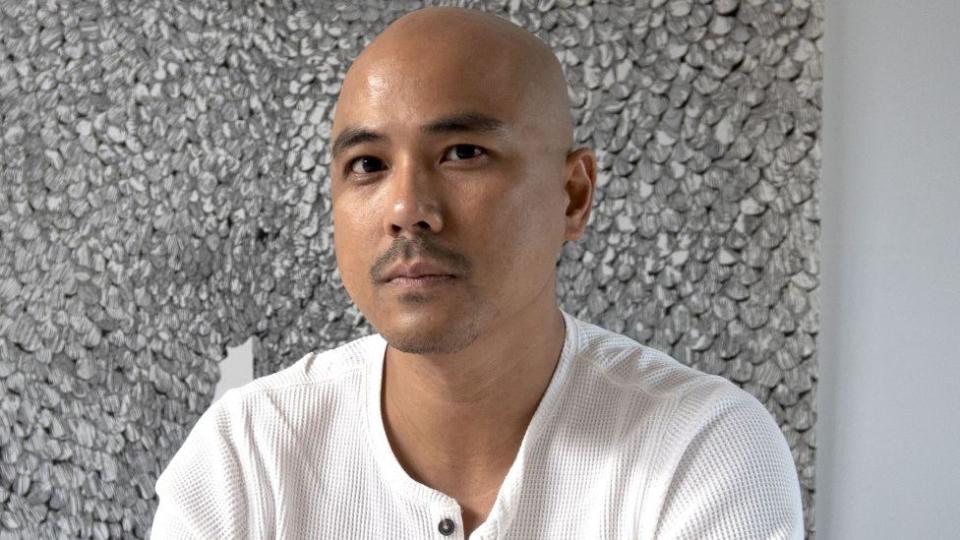

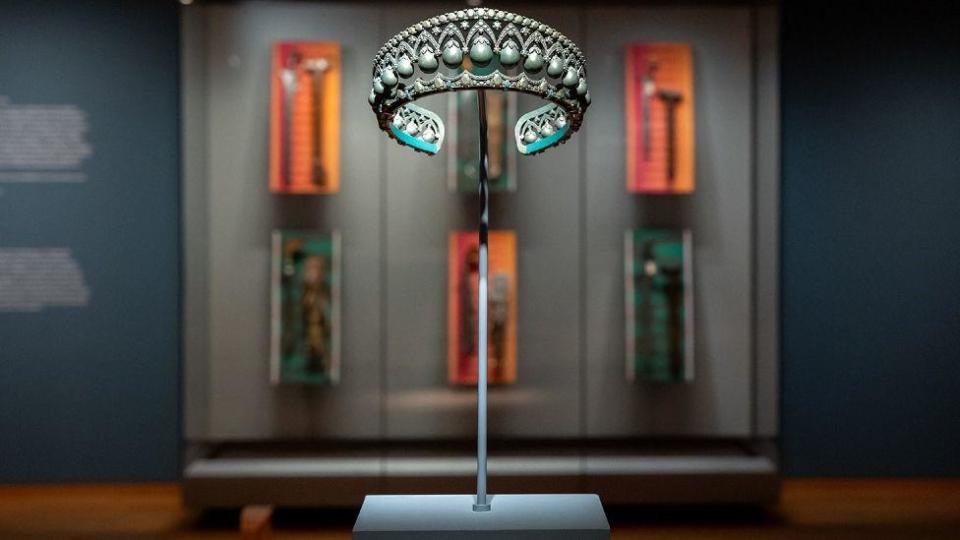

Manila-born Abad’s solo exhibition To Those Sitting in Darkness at the Ashmolean Museum in Oxford included drawings, etchings and sculptures that combined to “ask questions of museums”, according to the jury.
The 40-year-old, who works in London, reflects on colonial history and growing up in the Philippines, where his parents struggled against authoritarianism.
The title of his exhibit is a nod to Mark Twain’s 1901 essay To the Person Sitting In Darkness, which hit out at imperialism.
Jasleen Kaur
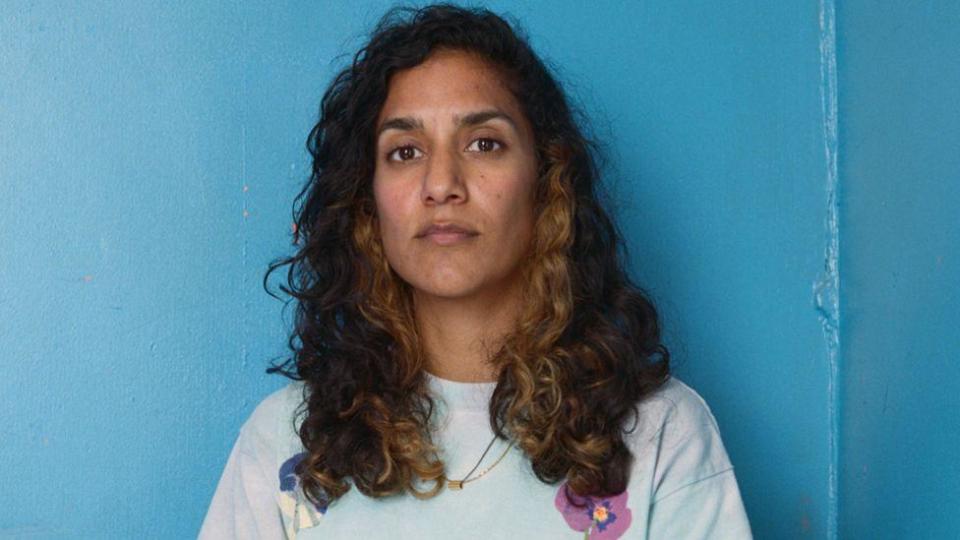

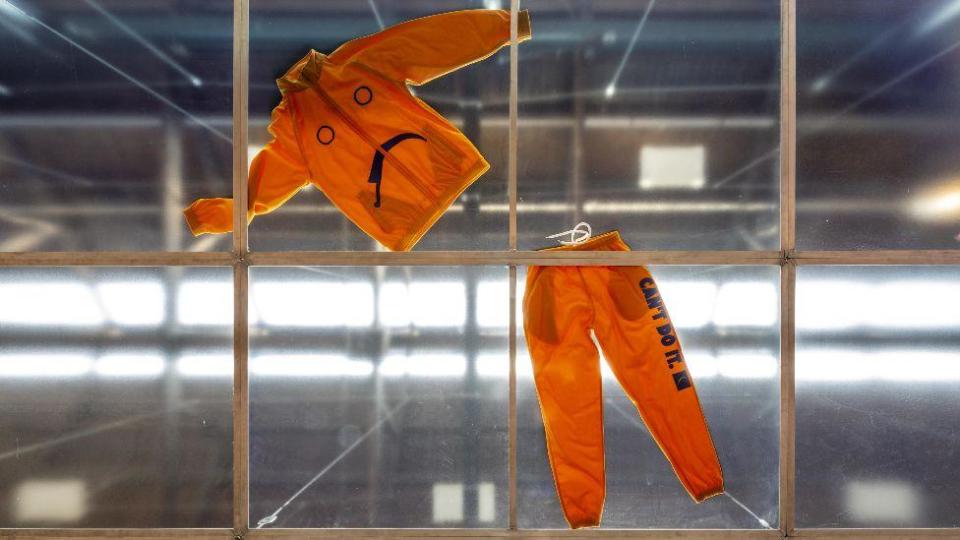

Kaur is on the list for Alter Altar at Tramway, Glasgow, which included family photos, an Axminster carpet, a classic Ford Escort covered in a giant doily, Irn-Bru and kinetic handbells.
The 37-year-old, who lives in London, had previously showcased her work at the Victoria and Albert Museum by looking at popular Indian cinema.
Delaine Le Bas


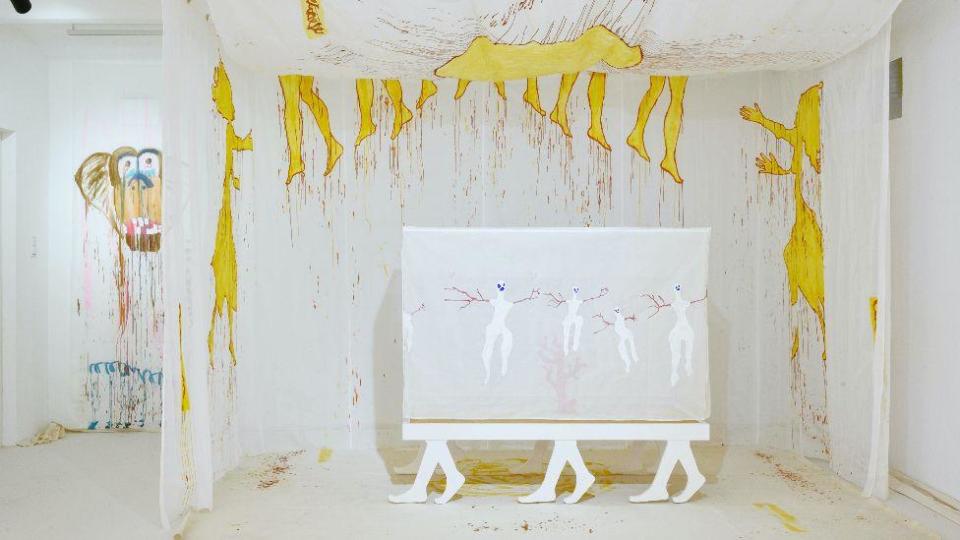

Worthing-born Le Bas is nominated for an exhibition titled Incipit Vita Nova. Here Begins The New Life/A New Life Is Beginning. Staged at the Secession art institute in Vienna, Austria, it saw painted fabrics hung, with theatrical costumes and sculptures also part of the exhibit.
The 58-year-old artist was inspired by the death of her grandmother and the history of the Roma people.
The jury said they “were impressed by the energy and immediacy present in this exhibition, and its powerful expression of making art in a time of chaos”.
Claudette Johnson


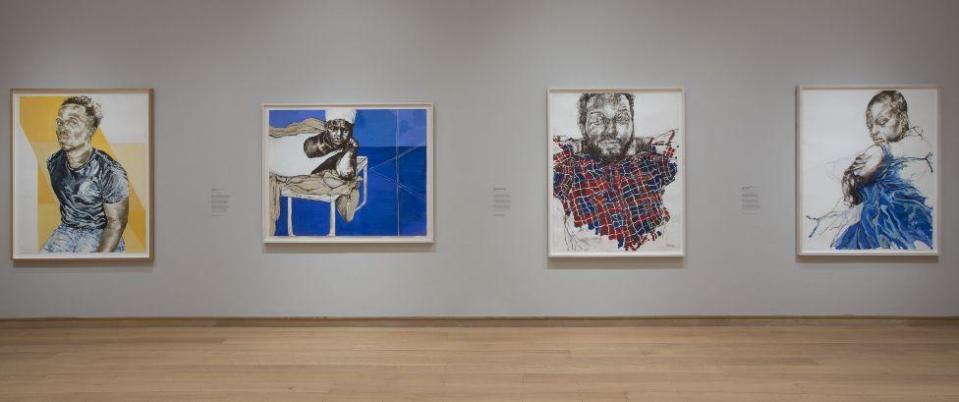

Manchester-born Johnson has been given the nod for her solo exhibition Presence at the Courtauld Gallery in London, and Drawn Out at Ortuzar Projects, New York.
She uses portraits of black women and men in a combination of pastels, gouache and watercolour, and was praised by the judges for her “sensitive and dramatic use of line, colour, space and scale to express empathy and intimacy with her subjects”.
Johnson, 65, was appointed an MBE in 2022 after being named on the New Year Honours list for her services to the arts.





Art
Turner Prize: Shortlisted artist showcases Scottish Sikh community
|
|
Turner Prize shortlist includes art showcasing Scottish Sikh community
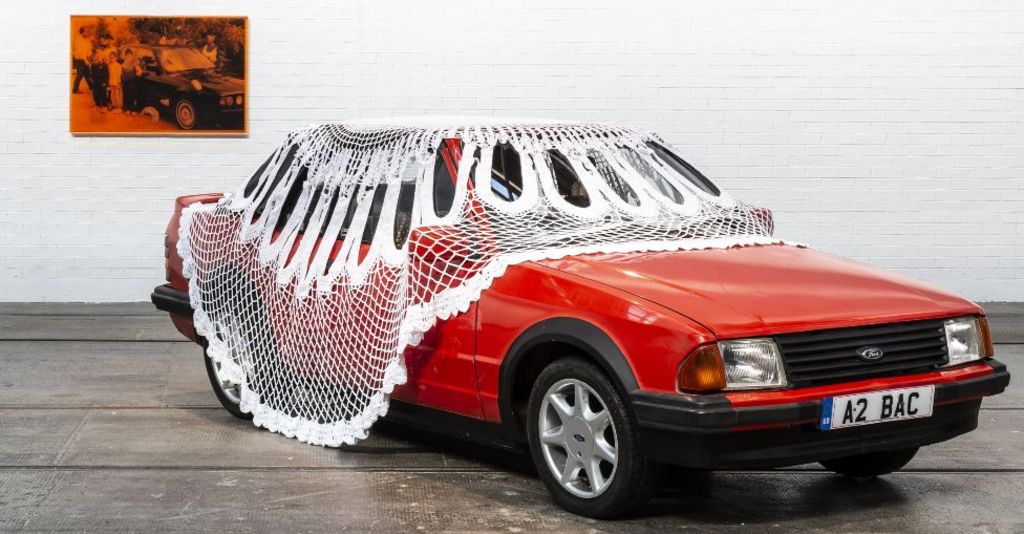

A Scottish artist who uses cars, worship bells and Irn-Bru in her work is among the nominees for this year’s Turner Prize.
Glasgow-born Jasleen Kaur’s work reflects her life growing up in the city’s Sikh community.
She is up for the prestigious art award, now in its 40th year, alongside Pio Abad, Claudette Johnson and Delaine Le Bas.
Turner Prize jury chairman Alex Farquharson described it as a “fantastic shortlist of artists”
Works by the nominated artists will go on show at London’s Tate Britain gallery from 25 September.
They will receive £10,000 each, while the winner, to be announced on 3 December, will get £25,000.
In a statement, Farquharson said: “All four make work that is full of life.
“They show how contemporary art can fascinate, surprise and move us, and how it can speak powerfully of complex identities and memories, often through the subtlest of details.
“In the Turner Prize’s 40th year, this shortlist proves that British artistic talent is as rich and vibrant as ever.”
The shortlisted artists are:
Pio Abad
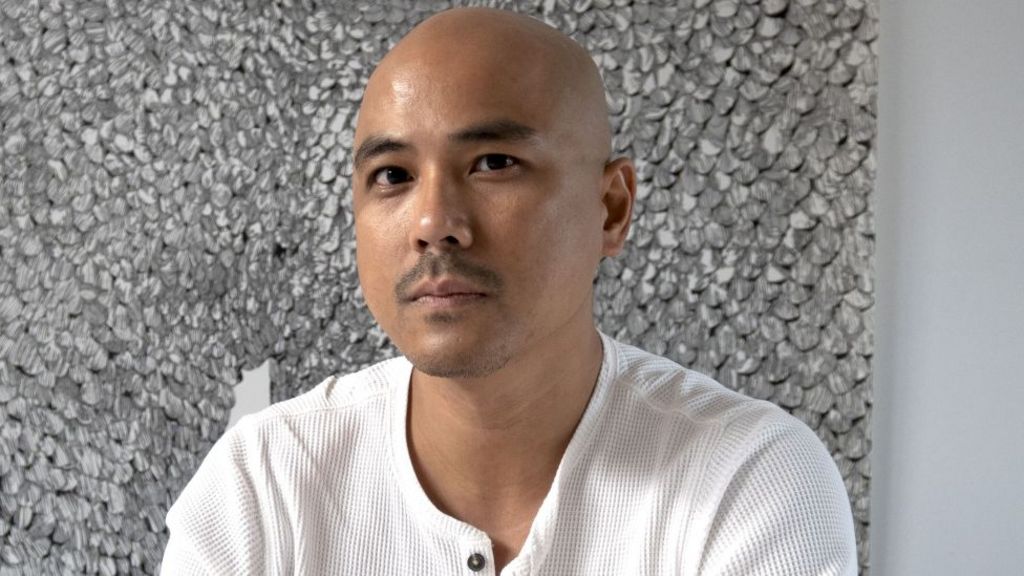

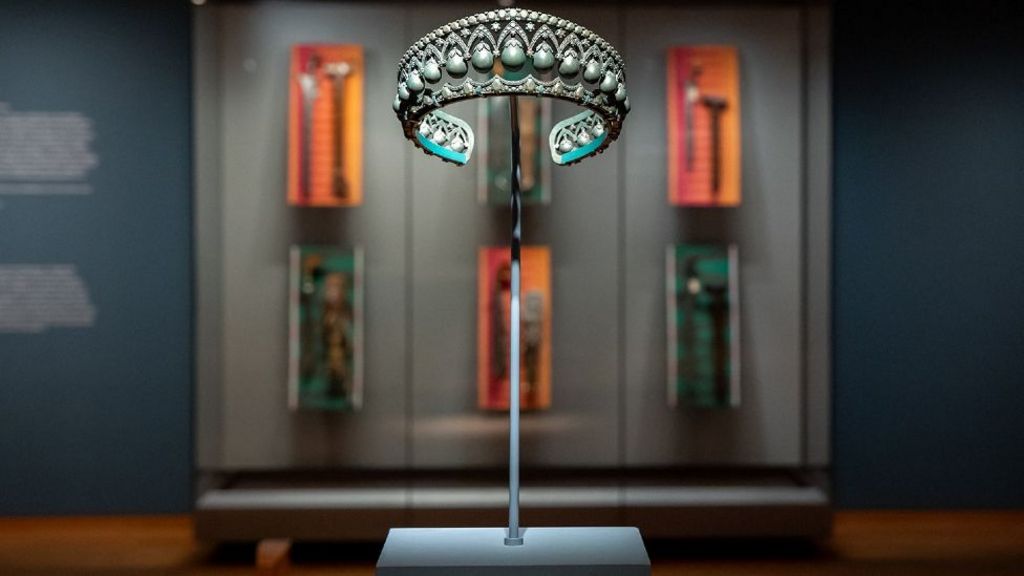

Manila-born Abad’s solo exhibition To Those Sitting in Darkness at the Ashmolean Museum in Oxford included drawings, etchings and sculptures that combined to “ask questions of museums”, according to the jury.
The 40-year-old, who works in London, reflects on colonial history and growing up in the Philippines, where his parents struggled against authoritarianism.
The title of his exhibit is a nod to Mark Twain’s 1901 essay To the Person Sitting In Darkness, which hit out at imperialism.
Jasleen Kaur
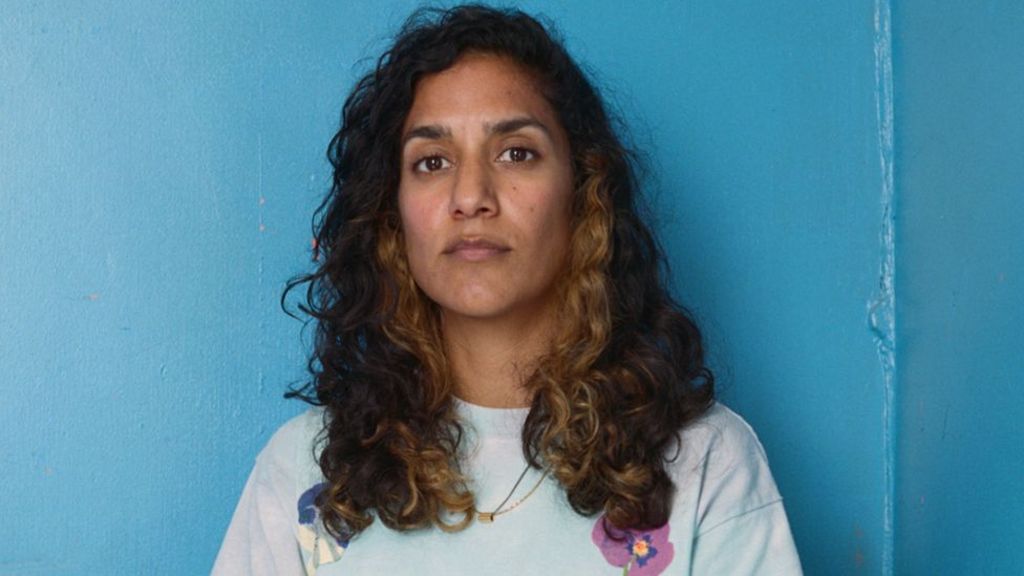

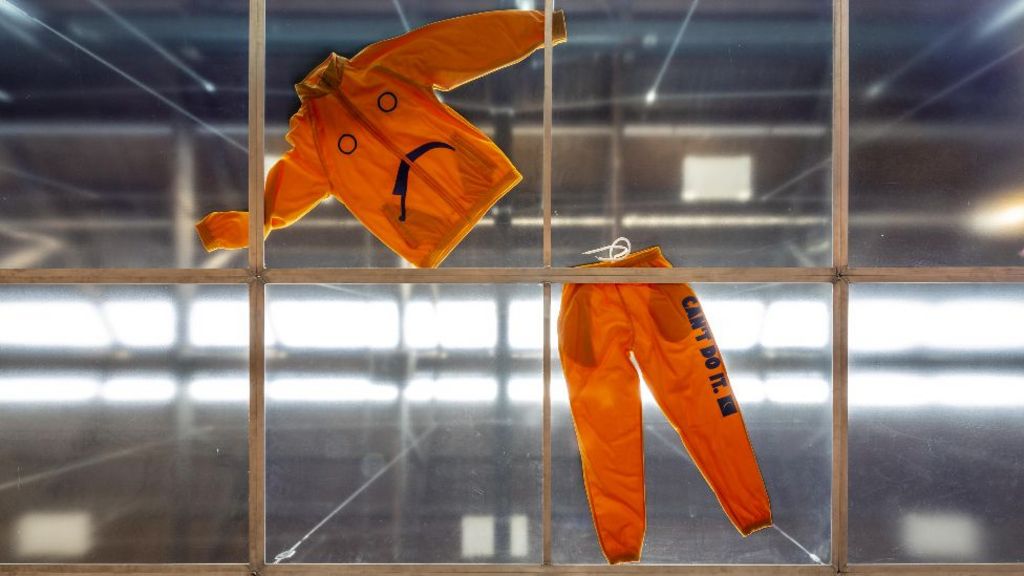

Kaur is on the list for Alter Altar at Tramway, Glasgow, which included family photos, an Axminster carpet, a classic Ford Escort covered in a giant doily, Irn-Bru and kinetic handbells.
The 37-year-old, who lives in London, had previously showcased her work at the Victoria and Albert Museum by looking at popular Indian cinema.
Delaine Le Bas
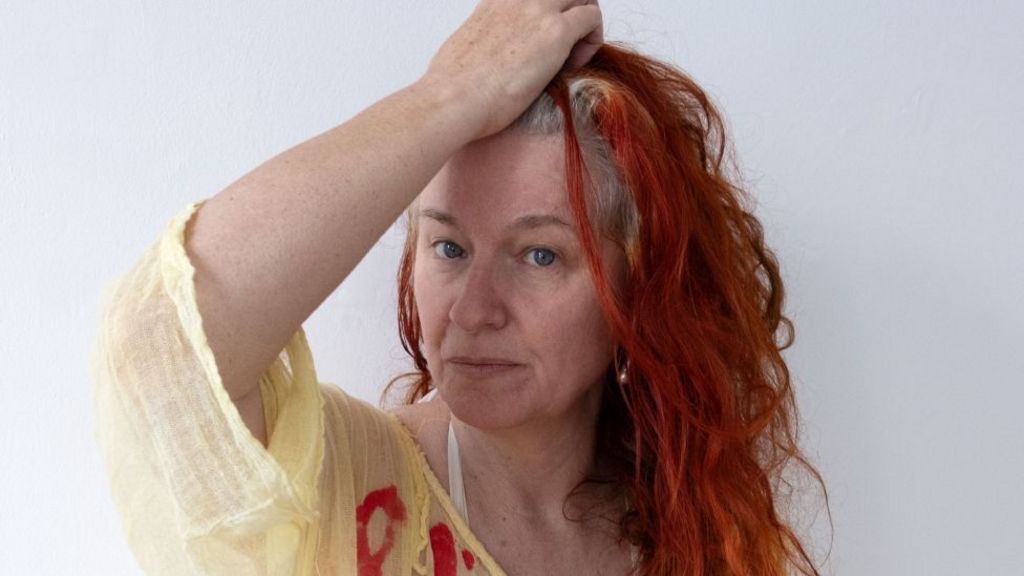



Worthing-born Le Bas is nominated for an exhibition titled Incipit Vita Nova. Here Begins The New Life/A New Life Is Beginning. Staged at the Secession art institute in Vienna, Austria, it saw painted fabrics hung, with theatrical costumes and sculptures also part of the exhibit.
The 58-year-old artist was inspired by the death of her grandmother and the history of the Roma people.
The jury said they “were impressed by the energy and immediacy present in this exhibition, and its powerful expression of making art in a time of chaos”.
Claudette Johnson
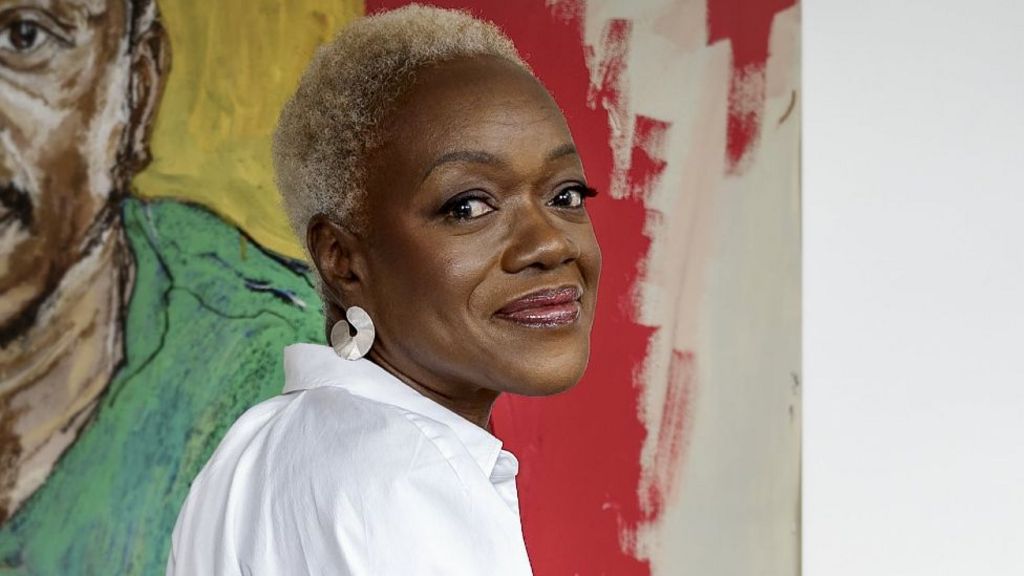

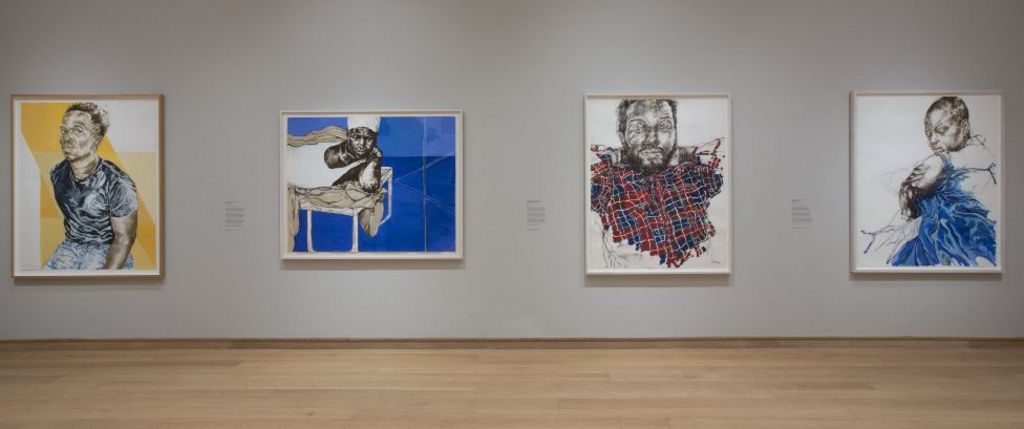

Manchester-born Johnson has been given the nod for her solo exhibition Presence at the Courtauld Gallery in London, and Drawn Out at Ortuzar Projects, New York.
She uses portraits of black women and men in a combination of pastels, gouache and watercolour, and was praised by the judges for her “sensitive and dramatic use of line, colour, space and scale to express empathy and intimacy with her subjects”.
Johnson, 65, was appointed an MBE in 2022 after being named on the New Year Honours list for her services to the arts.





-
News24 hours ago
Amid concerns over ‘collateral damage’ Trudeau, Freeland defend capital gains tax change
-
Art21 hours ago
The unmissable events taking place during London’s Digital Art Week
-
News23 hours ago
What is a halal mortgage? How interest-free home financing works in Canada
-



 Politics16 hours ago
Politics16 hours agoOpinion: Fear the politicization of pensions, no matter the politician
-
Economy22 hours ago
German Business Outlook Hits One-Year High as Economy Heals
-
Media15 hours ago
B.C. puts online harms bill on hold after agreement with social media companies
-



 Politics15 hours ago
Politics15 hours agoPecker’s Trump Trial Testimony Is a Lesson in Power Politics
-



 Science15 hours ago
Science15 hours agoNASA Celebrates As 1977’s Voyager 1 Phones Home At Last




